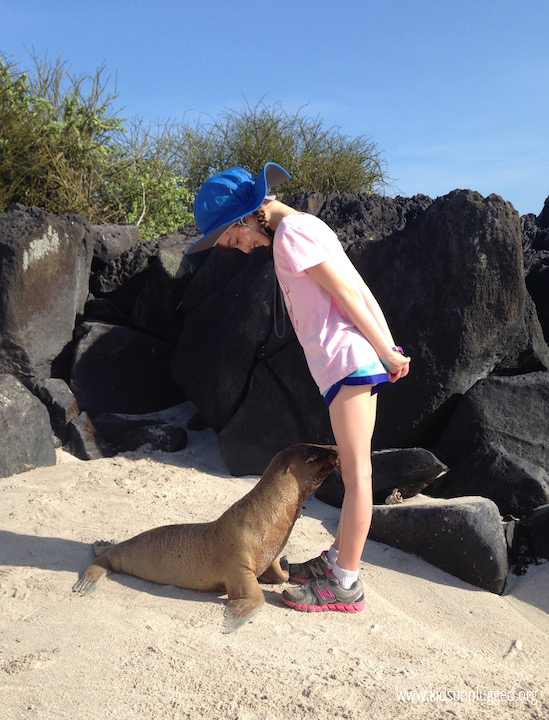
Photo Credit: BK Fischer
The animals in the Galapagos Islands come right up to you. A blue-footed booby perches calmly on a ledge as you walk past. A sea lion lies down for a nap near your towel. An iguana doesn’t move out of the way when you step closer. The experience is startling—birds, reptiles, and sea mammals, unafraid of people, tilt their heads curiously and pose for photographs.
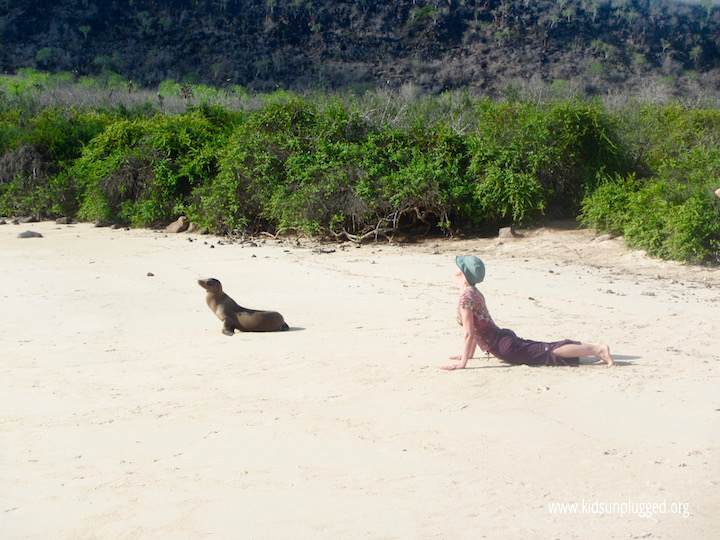
Photo Credit: BK Fischer
The Galapagos archipelago, 600 miles off the coast of Ecuador, was isolated from external influences for millennia, allowing species to evolve in relative seclusion and undisturbed by mammalian predators. This unique ecosystem was the one that gave Charles Darwin his big ideas about evolution, and it is a marvelous living laboratory—a chance to see nature undisturbed and science in action. Getting there takes a few flights, a ferry, a bus, and some overnight journeys by ocean, but the Galapagos Islands are a once-in-a-lifetime unplugged adventure.

Photo Credit: BK Fischer
We arrived at the equator for an 8-day journey, ready to get wet, ready to live off the grid without wifi or television, and ready to sleep and eat on a small ship for the duration. After crossing the Santa Cruz highlands and stopping to see the famed giant tortoises, we boarded the Samba in Puerto Ayora, joining an expedition by SunWind Travel that would take us to lava fields and flamingo ponds, turtle nesting grounds and sea-lion nurseries, teeming reefs and quiet coves.
Life on Board
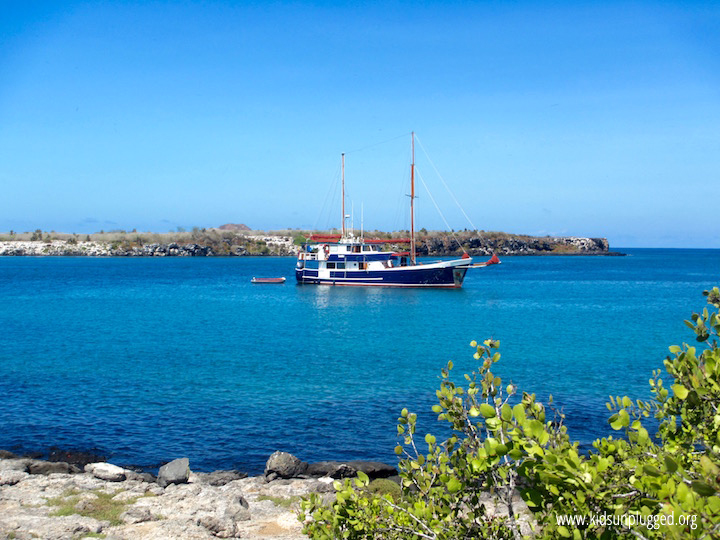
Photo Credit: BK Fischer
SunWind Travel’s Samba is a 14-passenger sailing yacht that took us for 8 days around a group of islands that span 3000 square miles. Life on board was cozy and comfortable, with well-appointed bunks, private baths, nooks for relaxing, and a sunny deck. We dined on local produce and fresh catch of the day, and gathered in the evenings for briefings about the adventures of the day ahead.
Our naturalist guide, Fausto, an expert in the island’s natural and human history, presented the biology, geology, ecology, and local lore with aplomb. The Galapagos Islands are a crash course in a total ecological awareness, a vivid classroom to understand evolution, climate change, and how ecosystems work.
On the Islands
Traveling across the long distances between islands by night, we arrived each morning at a new spot for exploring. Zodiacs brought us from the Samba to a beach or dock, and wet landings were common. From the beach, we were led on coastal trails and then to higher ground. Sometimes arid, sometimes tropical jungle, sometimes lava fields, the islands are each very different, and their flora and fauna vary, with unique ecosystems in each new place.
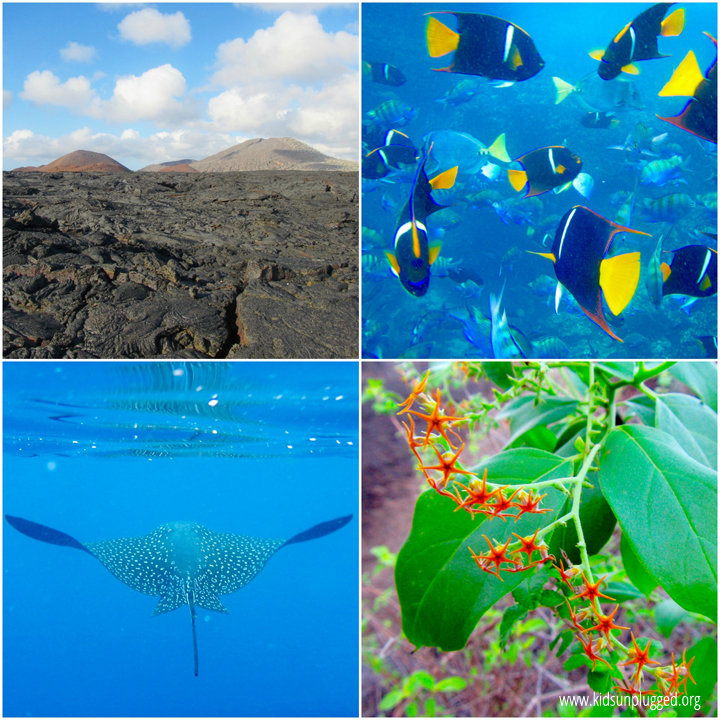
Photo Credit: BK Fischer
On Floreana, we saw flamingo nesting grounds and visited the iconic Post Office Bay, where letters from around the world are picked up by travelers and hand-delivered to their destinations.
The white sand beaches of Española Island are a playground for sea lions and humans alike—these inquisitive and engaging mammals interact with humans on the sand and in the surf, and are a highlight of the trip. We also visited a sea lion nursery on North Seymour Island, where mothers tended their nursing infants—a sea lion “mom’s group” in the sand.
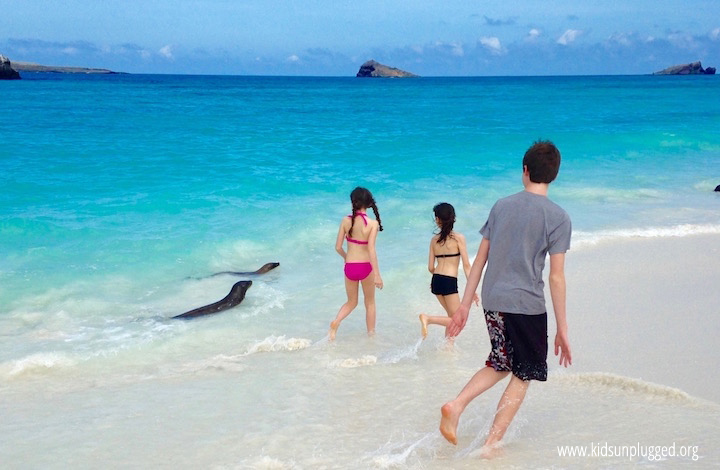
Photo Credit: BK Fischer
The Galapagos are a birders paradise, and even if you didn’t start out that way, they will make a birder out of just about anyone: each island affords close looks at myriad species, including the famous finches and blue-footed boobies, as well as night herons, frigate birds, cormorants, countless sea birds, and the elusive albatross. Plaza Sur presents excellent views of flocks of shearwaters and other seafarers from the cliffs.
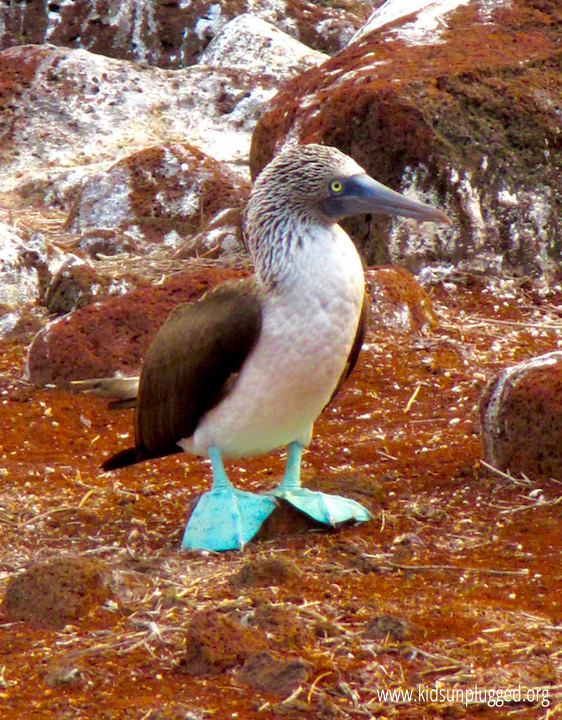
Photo Credit: BK Fischer
In the Water
The Galapagos are a great place to get wet, and we had several swimming and snorkeling adventures every day we were at sea. Abundant fish, moving among reefs in astonishing density, make for snorkeling experiences like no other. Eagle rays, turtles, squid, and Sally Lightfoot crabs are soon spotted.

Photo Credit: BK Fischer
With the expert knowledge of local guides about the animals’ habits and habitats, we swam in waters where sharks were common, observing these ancient and powerful creatures in a safe but awe-inspiring proximity.
Several times in the middle of siesta time, the crew sounded the bell to summon us to deck: dolphins were sighted! If we were moving, they swam along the boat, playfully in motion with us at the prow. If we were docked, we took off in the Zodiacs to jump in and swim among them, but not for long—they stayed in our midst for a short while, making their indescribable music and swimming around us, then took off for the deep ocean.

Photo Credit: BK Fischer
One of the most surprising species to see in Galapagos, situated as it is on the equator, are penguins! The Humboldt current brought a small species of penguins in a migratory path from Antarctica, and they live there feeding on the abundant fish that thrive in the cool polar-fed waters.
Planning Your Trip
The best time to visit the Galapagos is during the warm season, December to June, when seas are calmer, there is less rainfall, and more animals are mating. (March and April are the height of the bird mating season.) But the diversity of life forms in the islands means that there are different things to see in every month of the year.

Photo Credit: BK Fischer
Whenever you travel, leave an extra day or two to relax in Quito before you fly to the islands. Don’t miss the science center at the Equator site, where you can see exactly how water swirls down the drain in different directions whether you are in the northern or southern hemisphere (and straight down when you are on the line itself!) A tour of Old Quito with one of SunWind’s expert guides will take you to see the ornate gold of the Iglesia de la Compañía de Jesús and other architectural treasures of Quito’s colonial past.


Speak Your Mind